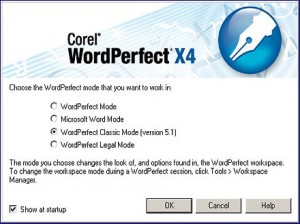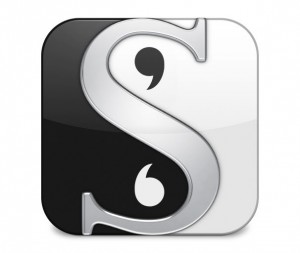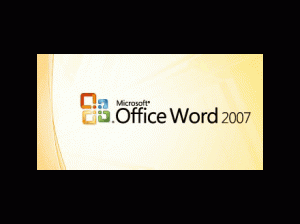Tools of the Trade
I am way behind on writing the second steampunk book (which may have a title, more on that as soon as I know!) I am behind on email, mailing out prizes, laundry, bills, errands, sleep, and just about everything else. So you know what I did yesterday? I decided to try a new writing software. Why? Well, I was hoping for a time-saving miracle, even though I know learning a new program always sucks up time I don’t have.
 For those who are interested in these sorts of things, I compose in Word Perfect, and handle copy edits and proofs in MS Word. There are some features in Word Perfect I love and which are second-nature to me. MS Word has always felt counter-intuitive and clunky, and determined to screw up things that I have to unscrew up as I go. But it’s the program my publisher, (and heck, most everyone else) uses.
For those who are interested in these sorts of things, I compose in Word Perfect, and handle copy edits and proofs in MS Word. There are some features in Word Perfect I love and which are second-nature to me. MS Word has always felt counter-intuitive and clunky, and determined to screw up things that I have to unscrew up as I go. But it’s the program my publisher, (and heck, most everyone else) uses.
Why do I use two programs? One, I’m adaptable, (a necessary survival skill for a writer.) And two, when I’m on deadline and composing first drafts, I want the most comfortable program I know. Comfortable means fast. Like I said, Word Perfect is second-nature to me now and I don’t have to search for anything I want to do.
But I’ve been hearing a lot about Scrivener lately. Writers I know and trust have said it’s pretty cool beans.
So I downloaded it (the beta test for Windows. PC users will get the real deal mid-August) and gave it a shot.
How’d it go? Well, I watched a couple tutorials, fiddled around until I could at least create and import/export documents, then got to work. Put 1,000 words on the outline and 2,000 words on the book itself. That was in the middle of a very busy day filled with other things. For a new program that I still haven’t figured out, and a busy day–that, my friends, is a roaring success.
The thing that swayed me? There’s a little green bar that lets you set how many words you need to get done for the day and marks your progress. There’s also a running word count at the bottom of the page. Those two features are exactly the “keep-your-eye-on-the-prize” reminder I need while writing. I love that little green bar so much that I’ll be buying Scrivener when it’s available.
Will it replace Word Perfect for me? I don’t know yet. There are other Scrivener features I haven’t fully explored: a cork board that looks gangbusters for outlining, script writing templates, ways of managing notes and media and files that I really want to try. But for now, I’m just happy to have found that little green bar. I think this is the beginning of a beautiful friendship.

3 Comments
Seleste deLaney
I adore Scrivener. I use a cork board for each character with vital stats and images. I have another cork board for my plot points. When I finally tackle my sci-fi project, I’ll have another for the planets. I love having everything all in one spot, and it’s so easy to flip from one to another (or split screen <3).
Cricket
How does your 1-line-per-chapter outline method work with Scrivener? I do it in a Word table so far, and it’s explained my beta-reader’s “I dunno why, but it’s just not riveting” reaction. I look forward to seeing what other tools Scrivener has that you like.
MeiLin Miranda
OMG Scrivener. It is the best thing evar. The more you use it and play around with it the better you’ll like it. I have the Mac version and have been using it for several years now; the current version even compiles direct to mobi and epub!
Cricket, Scrivener allows you to give each segment–scene, chapter, however you work because it’s incredibly adaptable and flexible–a synopsis. You can then view those synopses in aggregate as an outline or as virtual index cards which can then be dragged around, re-ordered, grouped or however you want. I cannot tell you how wonderful that is. So if you do a one-line-per-chapter outline, just create the outline as either index cards or in the outliner; those “one lines” then become the synopses for those segments. When you open one to write, it’s otherwise blank, but if you have the Inspector open you can see the “one line” to the right of the screen the entire time you’re writing. You can even split the screen and keep the whole of your outline visible in, say, the bottom section while you write in the top one.
I keep all my research in the Scrivener project file for my series–yep, the whole series is one project file, but that’s deceptive because of the way Scrivener works and I’m getting techwonky so I’ll leave that be, but the main thing is I’ve got an organized folder within the project with imported web pages full of research and reference photos for costumes, people and scenery. I’ve got all my character notes in the project as well. Everything displays in a “binder” at the left so if I’m writing I can split the screen, keep my manuscript in the top half, and look at the reference in the bottom half at the same time without leaving the program. And it has a pretty sweet full-screen mode, too.
That’s barely touching what Scrivener can do. *I’m* still learning everything it can do. Until there’s a linux version as powerful and fully featured as the Mac version I’m staying on the Mac platform–for Scrivener alone. No two writers use it the same way. You don’t have to adapt to it; it adapts to you, and that is the program’s greatness.
Sorry for the massive squee. I swear they don’t pay me. Devon, if you ever wanna see how I use it, just grab me at Orycon or ping me if you come up to town.